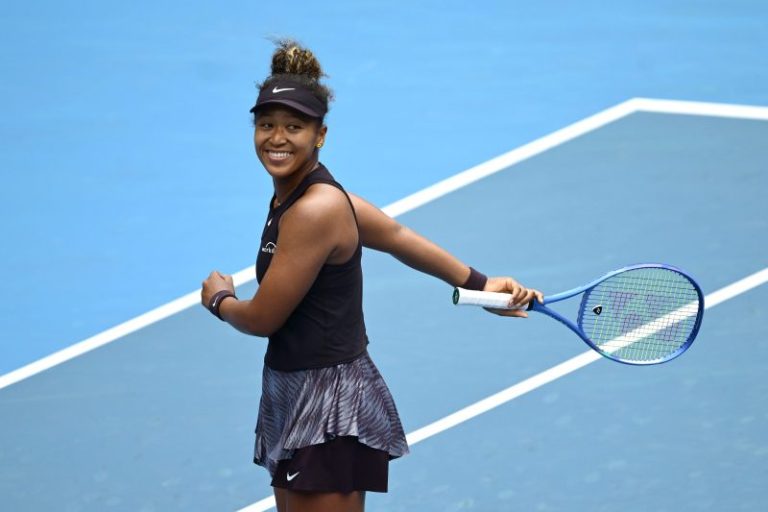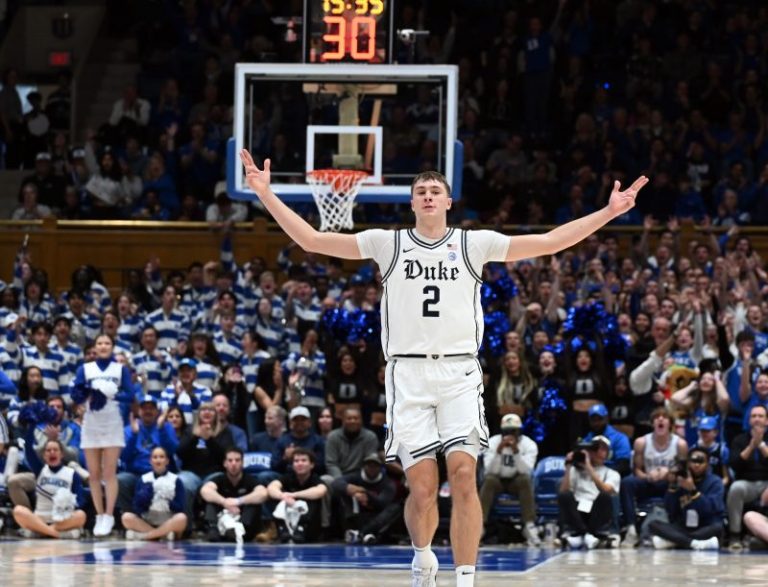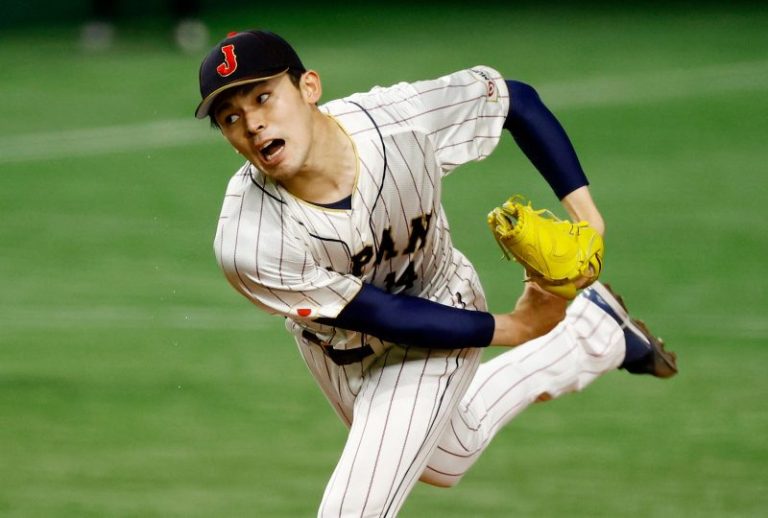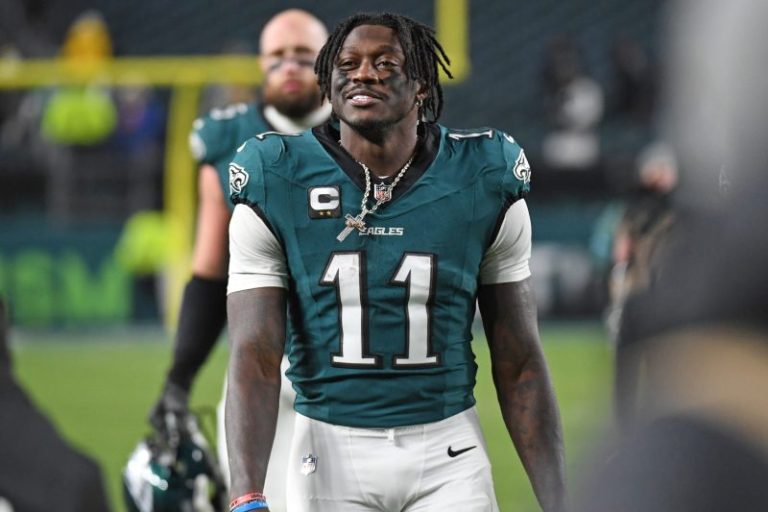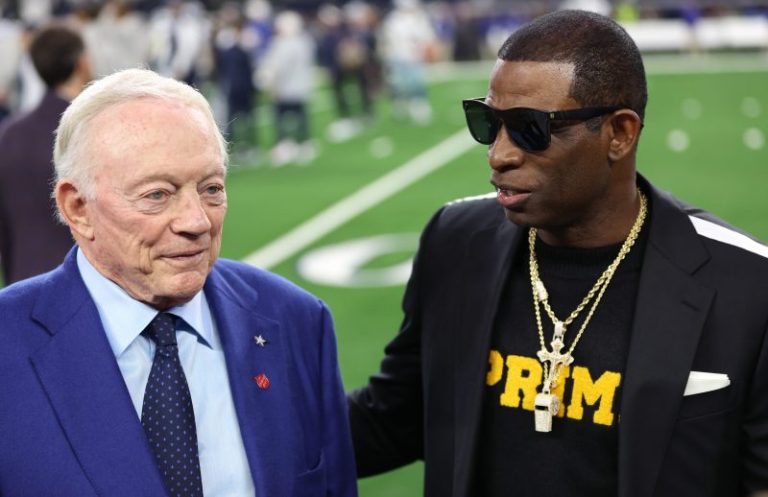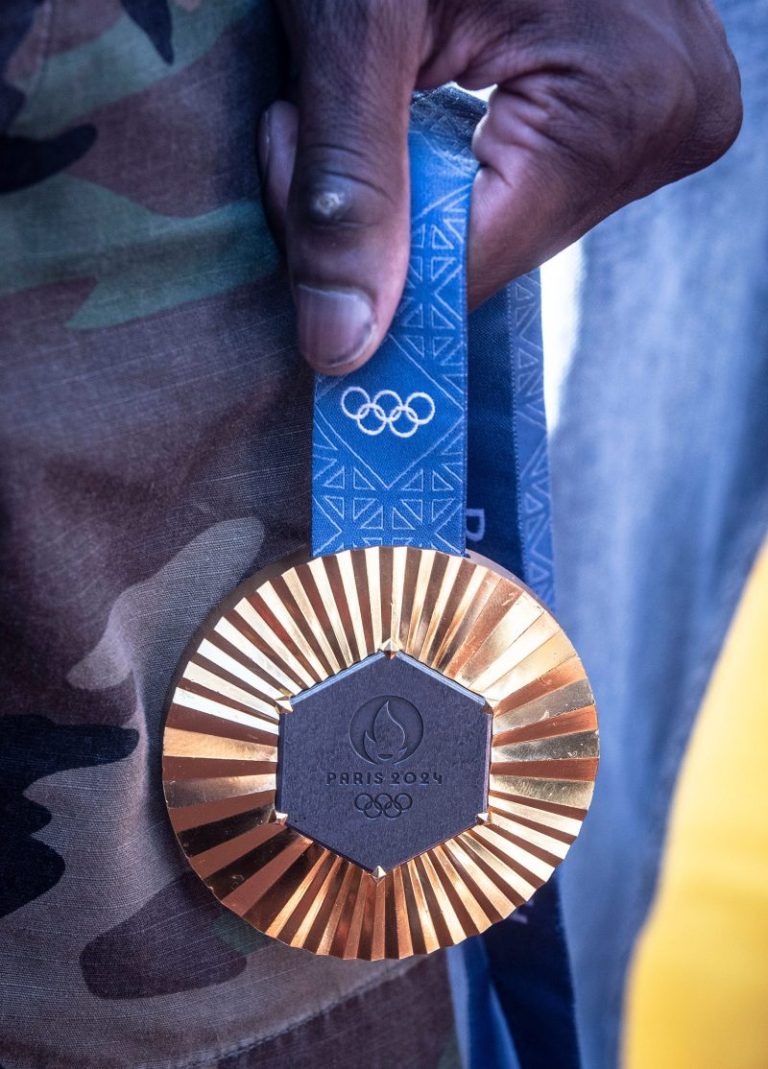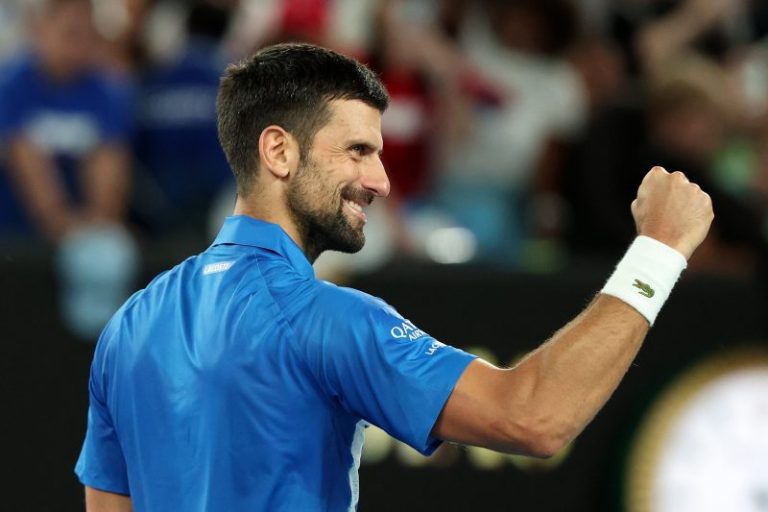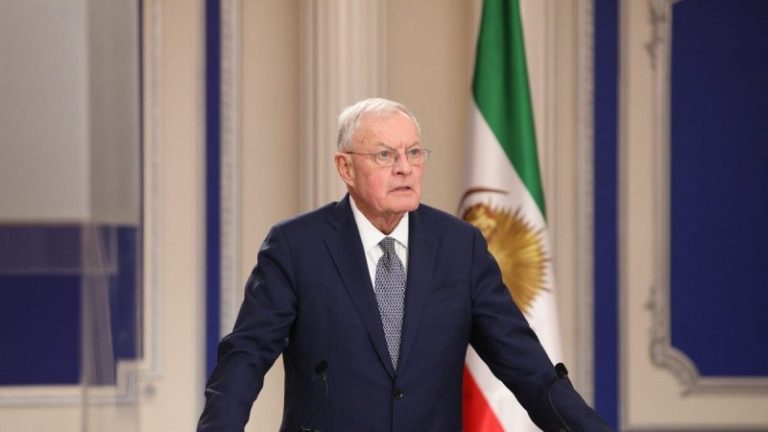Duke Blue Devils freshman Cooper Flagg had a game for the ages, scoring an ACC freshman-record 42 points against Notre Dame on 11-for-14 shooting from the field and 16-for-17 from the free throw line. He also had seven assists and six rebounds.
Rutgers Scarlet Knights freshman guard Dylan Harper had at least 20 points in 10 of his first 12 college games, including back-to-back games with 36 points against Notre Dame and 37 points against Alabama before the flu slowed him. Harper’s teammate, freshman Ace Bailey, scored 39 points against Indiana and has four double-doubles in points and rebounds.
They have stood out not only as three of the top freshmen in the nation but are considered the top three picks in the 2025 NBA draft.
Illinois freshman Kasparas Jakucionis has moved up draft boards with his ability to score, pass and rebound.
As college basketball teams dig into conference play, here is the latest USA TODAY Sports 2025 NBA mock draft (statistics through Sunday’s games):
***
1. Cooper Flagg, Duke
Freshman, guard-forward, 6-9, 205, 18 years old
2024-25 stats: 19.1 points per game, 8.3 rebounds per game, 3.9 assists per game, 1.6 steals per game, 1.3 blocks per game, 47.9% FG, 34.5% 3PT, 80.6% FT
Flagg has outstanding footwork, especially in the low post. He can use either hand on shots in the paint, knows how to run plays, can hit catch-and-shoot 3s and is an active weakside defender. Flagg is a physical player who initiates contact, is confident and plays with force when necessary. He scored an ACC freshman-record 42 points against Notre Dame.
2. Dylan Harper, Rutgers
Freshman, guard, 6-6, 215, 19
2024-25 stats: 20.1 ppg, 5.3 rpg, 4.4 apg, 1.0 spg, 50.7% FG, 35.2% 3PT, 74.7% FT
The lefty stroke will remind some of Jalen Brunson, but Harper has far more size at 6-6 and tremendous length with a wingspan of 6-foot-10. Harper’s best asset at the next level might be his versatility to run point and play off the ball.
3. Ace Bailey, Rutgers
Freshman, guard-forward, 6-10, 200, 18
2024-25 stats: 18.9 ppg, 7.6 rpg, 1.1 spg, 1.1 bpg, 45.5% FG, 35.5% 3PT, 56.4% FT
Bailey is a hyper-athletic wing with length and size coming into a league that prioritizes players built exactly the way he is with exactly the skill set he has: an effortless and reliable shot and an attack-first mentality with an ability to finish at the rim. Needs to improve as a playmaker on the pass and free throws.
4. VJ Edgecombe, Baylor
Freshman, guard, 6-5, 180, 19
2024-25 stats: 12.4 ppg, 5.6 rpg, 3.2 apg, 2.4 spg, 41.1% FG, 32.2% 3PT, 71.4% FT
The Bahamian native has displayed his athleticism, has shown he can be explosive and has an elite knack for steals. He will be able to contribute at the NBA level and can be aggressive at the point of attack. The freshman is a high-level off-ball scorer but can improve when it comes to on-ball scoring.
5. Kasparas Jakucionis, Illinois
Freshman, guard, 6-6, 205, 19
2024-25 stats: 16.4 ppg, 5.6 rpg, 5.4 apg, 1.3 spg, 49.6% FG, 41.4% 3PT, 87.5% FT
Jakucionis is a playmaker – a scorer and passer. He has range with a nice 3-ball, can shoot off the dribble from deep, including on step-back 3s and looks for an open teammate when he draws multiple defenders. Jakucionis sees the court well with savvy passes and likes to get to the rim for layups. But he can be turnover-prone.
6. Egor Demin, BYU
Freshman, forward, 6-9, 19
2024-25 stats: 11.1 ppg, 5.8 apg, 4.2 rpg, 1.5 spg, 43.1% FG, 29.1% 3PT, 67.6% FT
The Russian is a playmaker who can make quick decisions and facilitate for others. Demin is the size of a wing player but has guard-like skills. On defense, he uses his length to his advantage while forcing turnovers and being active in passing lanes. His shooting efficiency is a concern.
7. Kon Knueppel, Duke
Freshman, guard-forward, 6-7, 217, 19
2024-25 stats: 12.7 ppg, 3.4 rpg, 2.8 apg, 43% FG, 35.4% 3PT, 91.4% FT
He can ignite an offense with his 3-point shot, thanks to an efficient motion, seemingly always ready to receive the ball in his shooting pocket. He can also lace shots from midrange and takes care of the ball.
8. Liam McNeeley, UConn
Freshman, forward, 6-7, 210, 19
2024-25 stats: 13.3 ppg, 5.7 rpg, 2.8 apg, 41.1% FG, 35.3% 3PT, 81.6% FT
What McNeeley may lack in fluid athleticism, he more than makes up for with a smooth and natural shot. He also has a quick release and plenty of range to suggest that he should get early minutes. He had just started to find his rhythm, averaging 19.0 points in three contests before he suffered an ankle injury New Year’s Day that will sideline him for a few weeks.
9. Tre Johnson, Texas
Freshman, guard, 6-6, 190, 19
2024-25 stats: 18.9 ppg, 2.7 rpg, 2.2 apg, 47.5%FG, 41.1% 3PT, 85% FT
Johnson is a natural shooter and scorer. He does well when scoring on the move and is a decent playmaker for his size. He still needs to work on his ability to make plays for others. He must also work on his strength and his explosiveness in order to assert himself as a finisher at the rim.
10. Khaman Maluach, Duke
Freshman, center, 7-2, 250, 18
2024-25 stats: 8.8 ppg, 5.9 rpg, 1.1 bpg, 79.1% FG, 77.3% FT
Mobile big who excels in pick-and-rolls and has the hands to catch lobs for easy dunks; soft touch at the rim; shot-blocker/rim protector; active on the offensive glass; will get stronger and has a solid aptitude for the game, learning concepts quickly. Played for South Sudan at the 2024 Paris Olympics.
11. Jeremiah Fears, Oklahoma
Freshman, guard, 6-4, 182, 18
2024-25 stats: 16.6 ppg, 4.3 apg, 3.6 rpg, 1.9 spg, 46.4% FG, 27.9% 3PT, 84% FT
Solid start to his freshman season; quick on the dribble; has strength going to the rim and can finish; operates well in the pick-and-roll as a scorer and passer; needs to improve his 3-point shot but potential is there.
12. Ben Saraf, Ratiopharm Ulm (Germany)
Guard, 6-6, 200, 19
2024-25 stats: 11.9 ppg, 3.5 apg, 3.2 rpg, 50.4% FG, 30% 3PT, 72.7% FT
He’s just as comfortable knocking down a step-back jumper, finding creases in the paint and dishing the ball with excellent vision. He may need some time to develop as he adjusts to NBA athletes, but his length and size at point guard will make him an intriguing prospect.
13. Nolan Traore, Saint-Quentin (France)
Guard, 6-4, 175, 19
2024-25 stats: 10.4 ppg, 5.3 apg, 2.1 rpg, 32.7 FG%, 21.3% 3PT, 69.4% FT
Traore is a point guard who can score and pass and has court awareness but also a propensity for bad turnovers. He’s quick, can get to the rim and is comfortable taking his defender off the dribble. Needs to work on his shooting efficiency, especially on 3s. His brother, Armel, is on a two-way contract with the Los Angeles and South Bay Lakers.
14. Asa Newell, Georgia
Freshman, forward, 6-11, 220, 19
2024-25 stats: 15.4 ppg, 6.8 rpg, 1.2 bpg, 1.1 spg, 58.1% FG, 28.1% 3PT, 70.4% FT
Based off of his size, Newell wouldn’t appear to be as quick and fluid as he is, which should make him an instant threat in pick-and-roll situations. He led all Bulldogs with 17 points in an upset over No. 6 Kentucky, Georgia’s first win against a top-10 team in five years.
15. Noa Essengue, Ratiopharm Ulm (Germany)
Forward, 6-10, 198, 18
2024-25 stats: 7.8 ppg, 4.5 rpg, 1.5 apg, 39.2% FG, 63.5% FT
The next forward with elite finishing ability to come out of France, Essengue figures to be more of a developmental prospect, but his size, instincts at the rim and plus-defensive ability could make him a star if he bulks up.
16. Drake Powell, North Carolina
Freshman, guard-forward, 6-6, 195, 19
2024-25 stats: 7.4 ppg, 3.5 rpg, 48.9% FG, 39.5% 3PT, 68% FT
Powell is active on both ends of the court as a shot-blocker and physical, versatile defender, and as a player who likes to run the court and launch catch-and-shoot 3s. Playing on a deep team, especially on the perimeter, Powell doesn’t possess eye-popping offensive stats but his shooting stats reveal his potential.
17. Derik Queen, Maryland
Freshman, center, 6-10, 246, 20
2024-25 stats: 15.5 ppg, 7.8 rpg, 1.9 apg, 1.3 spg, 1.0 bpg, 55.6% FG, 75.3% FT
An active, physical big man, Queen has a soft touch around the rim with either hand but has a power game, too. He can run the court and handle the basketball well for a power forward-center. He is another potential first-round pick with good hands and footwork and has the mechanics to become a shooter who can stretch the floor.
18. Collin Murray-Boyles, South Carolina
Sophomore, forward, 6-8, 245, 20
2024-25 stats: 15.1 ppg, 9.3 rpg, 2.1 apg, 1.3 spg, 1.3 bpg, 59.9% FG, 30.8% 3PT, 68.8% FT
Although he’s a bit undersized at 6-foot-8 for a power forward, Murray-Boyles plays with intense effort and determination, which will very quickly please his NBA coaches. He also has plenty of strength to finish at the rim, and is ranked in the top 30 nationally in rebounding at nearly 10 boards per game.
19. Boogie Fland, Arkansas
Freshman, guard, 6-2, 175, 18
2024-25 stats: 15.5 ppg, 5.9 apg, 3.6 rpg, 1.7 spg, 41.7% FG, 35.7% 3PT, 81.1% FT
Fland is an aggressive defender, can hit mid-range shots, makes 3s off the dribble and on catch-and-shoots and attacks the rim. He is getting more comfortable reading defenses and finding advantages with the pass.
20. Labaron Philon, Alabama
Freshman, guard, 6-4, 177, 19
2024-25 stats: 12.1 ppg, 4.0 apg, 3.8 rpg, 1.3 spg, 51.4% FG, 28.3% 3PT, 68.3% FT
Philon excels in transition with his speed and ability to finish at the rim; is capable on catch-and-shoot 3s but needs work on that part of his game. He’s a heady defender who disrupts opponents with his ability to get steals.
21. Will Riley, Illinois
Freshman, forward, 6-8, 195, 19
2024-25 stats: 10.9 ppg, 3.7 rpg, 1.7 apg, 39% FG, 32.4% 3PT, 71/9% FT
Riley possesses great size and can make 3s and find open teammates. Like many young players, he needs to improve his shot and he has struggled to score in Big Ten games. He looks for offensive rebounds.
22. Hugo Gonzalez, Real Madrid (Spain)
Guard-forward, 6-7, 207, 19
2024-25 stats: 5.3 ppg, 2.3 rpg, 46.9% FG, 30.4% 3PT, 64.7% FT
One of Europe’s top young NBA prospects, Gonzalez is a versatile wing with the ability to score inside and out. He can handle the basketball, pass and is a surprising shot-blocker. He’s still raw.
23. Alex Karaban, UConn
Junior, forward, 6-8, 225, 22
2024-25 stats: 16.1 ppg, 5.1 rpg, 2.9 apg, 1.7 bpg, 49.1% FG, 43% 3PT, 76.6% FT
After initially declaring for the 2024 draft, Karaban withdrew and opted to return to UConn, where he’s leading the Huskies in scoring. In the NBA, Karaban figures to be more of a complimentary player, with a knack for finding open gaps in a defense. His ability to catch and shoot should translate instantly.
24. Adou Thiero, Arkansas
Junior, forward, 6-8, 220, 21
2024-25 stats: 16.9 ppg, 5.9 rpg, 2.2 apg, 2.0 spg, 60.8% FG, 24% 3PT, 66.3% FT
A quick and athletic leaper, Thiero likes to run the court for easy transition buckets. He is solid off the dribble and attacks his defender on the way to the rim. Thiero gets his hands into passing lanes for deflections and steals. He will need to improve his outside shot.
25. Dink Pate, Mexico City Capitanes (G League)
Guard, 6-8, 210, 19
2024-25-stats: 10.5 ppg, 4.4 rpg, 1.6 apg, 42.4% FG, 35.8% 3PT, 76% FT
In his second G League season, Pate has a ton of potential. An athletic wing, Pate flourishes in the open court. He has improved his shot season over season – a positive sign – and is comfortable shooting inside and out.
26. Ian Jackson, North Carolina
Freshman, guard, 6-4, 190, 20
2024-25 stats: 15.4 ppg, 3.5 rpg, 50.9% FG, 42.7% 3PT, 73.2% FT
An athletic scoring guard, Jackson has a jump shot, likes getting to the rim and uses his quickness in the open court. Has strength and initiates contact. Crafty at the rim in tight spaces.
27. Derrion Reid, Alabama
Freshman, forward, 6-8, 220, 18
2024-25 stats: 8.1 ppg, 3.4 rpg, 45.7% FG, 28.1% 3PT, 53.1% FT
He’s a versatile forward who plays aggressively to get to his spots when looking to score. He can be a premier player in the class if he improves his skills as a wing player.
28. Michael Ruzic, Joventut (Spain)
Forward, 6-9, 223, 18
2024-25 stats: 4.8 ppg, 3.0 rpg, 43.8% FG, 33.3% 3PT, 33.3% FT
The Croatian is a talented frontcourt player with clear NBA potential who moves well for his size and can be a smart player on both sides of the ball. Ruzic has been off to a slow start this season and missed some time with a thumb ligament injury but had a solid season in 2023-24 that attracted attention.
29. Ryan Kalkbrenner, Creighton
Senior, center, 7-1, 270, 23
2024-25 stats: 17.7 ppg, 8.1 rpg, 2.76 bpg, 1.1 apg, 66.7% FG, 42.9% 3PT, 69.6% FT
Another player who can be a modern-day NBA big man: runs the court well, knows how to run the pick-and-roll as the screener, finishes at the rim, posts up when necessary and can step out and hit 3-pointers though his attempts are limited. Gets offensive rebounds and is a solid shot-blocker.
30. Rocco Zikarsky, Brisbane (Australia)
Center, 7-2, 227, 18
2024-25 stats: 4.6 ppg, 3.4 rpg, 52% FG, 56% FT
Zikarsky is a 7-footer who possesses decent footwork and is adept in pick-and-rolls. The left-hander hits the offensive glass and uses strength in the low post. He is a capable passer, improving shot-blocker and has good hands.
This post appeared first on USA TODAY

